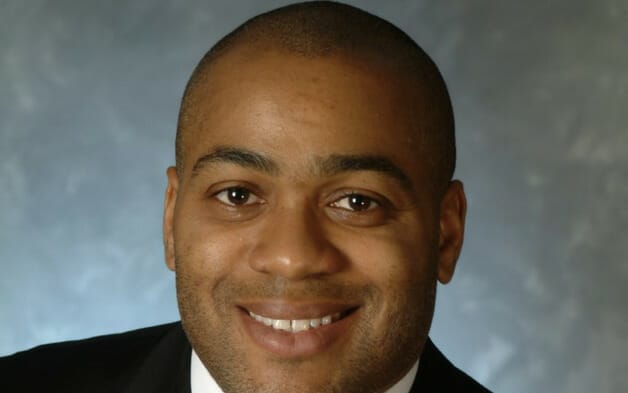The Public Employees Retirement Association of New Mexico, PERA, is increasing its allocation to private markets to 40 per cent of its $16.6 billion portfolio in the hunt for illiquidity premiums, despite the spectre of markdowns ahead.
The proposal for a 7 per cent increase to private markets focused on private equity (where the allocation will grow from 12 to 17 per cent of AUM) and credit is about to go to PERA’s full board for approval, explains Michael Shackleford, the pension fund’s new CIO who took the helm in August. In the pipeline before he joined the fund, if approved, the boosted allocation sourced by reducing investments to emerging market debt and core bonds, will mark the first of several changes he plans for the portfolio.
“Relative to peer funds, we are near the bottom in terms of the amount of risk we take. Increasing our investment in private markets will allow us to take incrementally more risk to generate incrementally more return,” he says.
Although darkening economic clouds put the risk of investing in private markets increasingly front of mind, Shackelford says it remains outweighed by the potential returns compared to public markets. “It’s true that investors are driving down the illiquidity premium in private markets – the more you pay, the less the return. At some point that premium will be driven down so much it may not be worth it and we might as well all be in public markets, but this is still a few years down the road.”
Those risks are most prevalent in private credit where Shackleford notes that the illiquidity premium has reduced on the back of higher interest rates. “High yield bonds and leveraged loans are closer to where private loans are at the moment.”
Still, long-term he expects private credit to outperform public credit once interest rates come down again. “Over the long term, we will be paid to own private credit over public debt. We still have a meaningful allocation to core bonds, high yield and leveraged loans but private credit is a good way to add returns.”
New managers
PERA will most likely re-up with existing managers in private equity but in credit the hunt for new managers is underway. A key element of the bigger allocation involves moving away from credit hedge funds and investing instead with direct lending managers focused on middle market companies with a good track record in terms of yield. Strategies could include making loans to solid companies with a private equity sponsor able to step in and provide the capital, he says. “If the business gets into trouble, you can take possession of the assets and pay off the loan.”
The hope is this approach will do better than PERA’s allocations to credit hedge funds where he says success has depended on managers performing in volatile public markets and successfully picking winners and losers, rather than a simplified approach making loans based on the fundamentals of a company. “Credit hedge funds have had a hard time – it’s much harder for a manager to get it right.”
Private credit managers in contention include relationship formed at North Dakota Board of University and School Lands where as director of investments he was involved in seeding funds with a raft of managers. “I am already talking to them,” he says. Elsewhere, Shackelford plans to draw on PERA’s own bench which he has spent his first months vetting and getting to know.
Open ended
Shackleford is a keen proponent of open-end fund structures which, rather than a one-off commitment, allow investors to add money over time. “I want to give money as we have it. This way we also will get distributions back in terms of interest payments, but no principle back until we want it.”
He is also interested in credit managers offering opportunities to seed funds in an approach that allows PERA to influence the structure and model of the investment alongside lower fees. “Say we go into an existing fund paying 75 basis points in a management fee,” he says. “Compare that to seeding a fund and paying 30 basis points in a manager fee – that equates to an increased alpha of 45 basis points. Almost half a percentage point is meaningful over a long period of time.”
There are a few caveats, however. Seed funding requires chunkier sized investments and inhouse skills to evaluate direct investments. It also involves investing in a smaller number of companies with more concentration risk than a pool. “If you have a good staff of people who can review investments and you have faith in the manager, you can make those types of investments.” PERA, which outsources all asset management excluding a cash management piece, has an internal staff of about 13.
In private equity he increasingly favours co-investment but via open-end fund-of-one vehicles rather than bespoke co-investment transactions. Once again, this structure allows him to add capital as he goes, and seed funds without a management fee. “Funds-of-one are open ended so you can add more capital as the manager does more deals,” he explains. “All we do is add capital to the fund of one and then we can co-invest alongside the manager’s second fund. If the manager does a third fund, we add more capital to the fund of one and co-invest in the third fund.”
Risk parity
In another shakeup, Shackelford is cutting back on PERA’s risk parity allocation setup by his predecessor Dominic Garcia in 2018. He plans to pare back the allocation from 10 per cent to 8 per cent of assets under management in the first step of a reduction that is likely to go further still. “It could get cut back more in the future, but 8 per cent is a good start. We will continue to monitor it.”
The decision isn’t just based on the fact risk parity has had a difficult year. He is also questioning the role of risk parity in a multi-asset portfolio – namely the rationale for a meaningful allocation to a substitute multi asset portfolio that mirrors the large portfolio.
“Using futures and derivatives to get exposure to stocks and bonds and commodities and trying to balance those risks is fine, but in this market where all stocks and bonds are down because of high inflation this strategy doesn’t do very well. My view is that we can cut this back and do other things with our risk dollars.”
ESG
Shackleford is steering clear of the ESG debate raging amongst fellow US public pension funds. New Mexico currently views ESG integration by its managers as a nice-to-have, add-on that is not essential. “It’s not required by law and the board haven’t spoken on the issue,” he says. ESG integration only manifests in a tie break between two managers offering the same returns, style and strategy. “There are arguments on either side of the debate. It’s not something we ask our managers to have. It’s a contentious issue; the best thing to do is for the legislature to speak otherwise you are dammed if you do and dammed if you don’t.”


